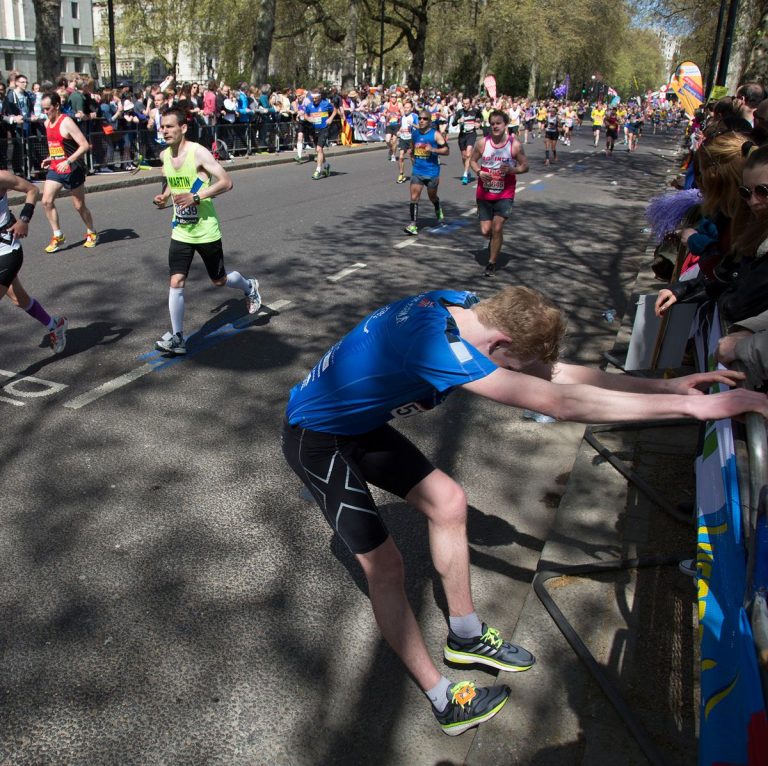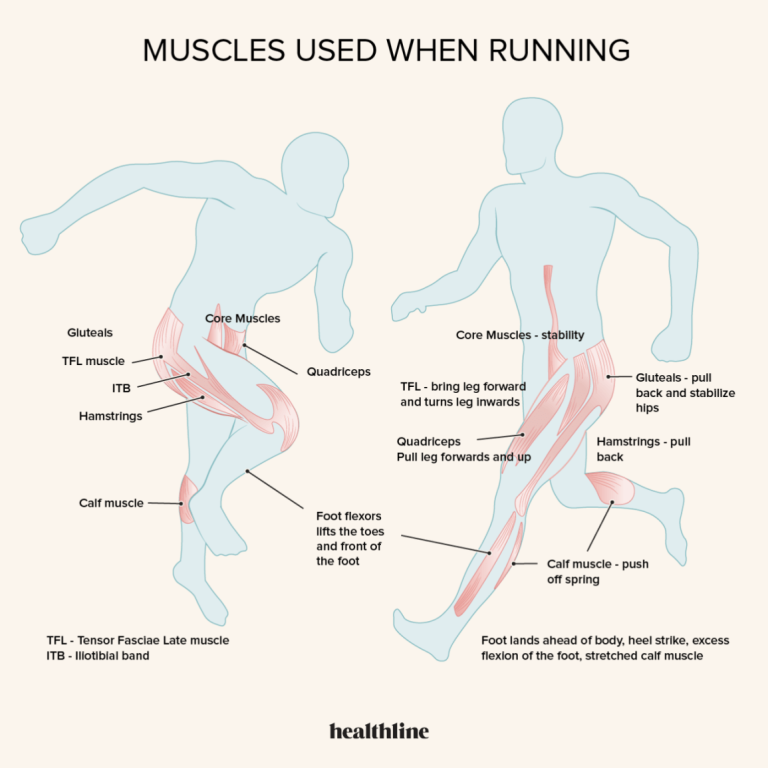How to Calculate Your Maximum Heart Rate For Running
To calculate your maximum heart rate for running, subtract your age from 220. This formula is a general guideline.
Running relies heavily on a strong cardiovascular system and endurance. Understanding your maximum heart rate can optimize your training and improve your overall performance as a runner. It’s a key metric to monitor and adjust your effort level during workouts.
By calculating this important number, you can tailor your running intensity to reach your fitness goals more effectively. Knowing your maximum heart rate will help you make smarter decisions about your training sessions, ensuring you’re pushing yourself enough but not overexerting your body.

Credit: www.polar.com
What Is Maximum Heart Rate?
What is Maximum Heart Rate?
Definition Of Maximum Heart Rate
Maximum Heart Rate refers to the highest number of times your heart can beat in a minute during intense physical activity. It is a crucial metric for runners as it determines the upper limit of their cardiovascular endurance.
Importance Of Knowing Your Maximum Heart Rate
Knowing your maximum heart rate is essential for runners as it helps them optimize their training and performance. By understanding this metric, individuals can tailor their workouts to improve their cardiovascular fitness and avoid overexertion.
Factors Affecting Maximum Heart Rate
Age
Maximum heart rate commonly decreases with age due to changes in cardiovascular function.
Fitness Level
Higher fitness levels can lead to a lower maximum heart rate during exercise.
Genetics
Genetics play a crucial role in determining your maximum heart rate potential.
Methods To Calculate Maximum Heart Rate
Calculating your maximum heart rate (MHR) is crucial for optimizing your running performance. There are several methods to determine your MHR, each offering a slightly different approach. Let’s explore three common methods: 220-Age Method, Heart Rate Reserve Method, and Karvonen Formula.
220-age Method
The 220-age method is a simple yet widely-used formula to estimate MHR. To use this method, subtract your age from 220 to get an approximate maximum heart rate.
Heart Rate Reserve Method
The heart rate reserve method takes into account your resting heart rate (RHR) along with your age to calculate MHR. By subtracting your RHR from your predicted maximum heart rate, you can determine your heart rate reserve.
Karvonen Formula
The Karvonen formula provides a more personalized approach to calculating MHR by considering your resting heart rate and age in relation to your fitness level. This formula takes into account your heart rate reserve and adjusts it based on the intensity of your exercise.

Credit: www.facebook.com
How To Measure Your Heart Rate
Measuring your heart rate is crucial for understanding your body’s response during running. It helps in determining your maximum heart rate, a key metric for optimizing your running performance.
Using A Heart Rate Monitor
A heart rate monitor is a convenient and accurate tool for measuring your heart rate during exercise. It provides real-time data and allows you to track changes in your heart rate throughout your run. To use a heart rate monitor, follow these steps:
- Adjust the strap of the heart rate monitor securely around your chest.
- Activate the monitor and pair it with your device or watch.
- During your run, monitor the display to keep track of your heart rate.
Taking Your Pulse Manually
If you prefer not to use a heart rate monitor, you can still measure your heart rate manually. Here’s how to take your pulse:
- Locate your pulse by pressing the tips of your index and middle fingers gently against the artery on the thumb side of your wrist.
- Count the number of beats you feel within a 15-second period.
- Multiply this number by 4 to calculate your heart rate in beats per minute.
Applying Maximum Heart Rate In Running
Knowing your maximum heart rate (MHR) is essential for optimizing your running performance and monitoring your exertion levels during workouts. After determining your MHR using the age-predicted formula, you can apply this information to calculate your target heart rate zones and train more effectively.
Determining Target Heart Rate Zones
Your target heart rate zones can be calculated using a percentage range of your maximum heart rate. These zones provide guidance on the intensity levels at which you should be training to achieve specific fitness goals. Here’s a breakdown:
Zone 1: Recovery/Easy Effort
This zone corresponds to approximately 50-60% of your maximum heart rate and is perfect for recovery runs or warm-ups. It allows your body to recover and helps build endurance without putting too much stress on your cardiovascular system.
Zone 2: Aerobic Base
Zone 2, which is around 60-70% of your MHR, focuses on building aerobic capacity and increasing endurance. Training in this zone improves your ability to utilize oxygen efficiently while maintaining a steady effort.
Zone 3: Tempo/Threshold
Around 70-80% of your MHR, zone 3 is ideal for tempo runs and threshold workouts to enhance your lactate threshold. Training in this zone helps you sustain a faster pace for longer periods, improving your overall speed and pushing your limits.
Zone 4: Submaximal Effort
Zone 4 comprises 80-90% of your MHR and is commonly used for interval training and high-intensity efforts. Running in this zone enhances your anaerobic capacity and helps improve your speed and power.
Zone 5: Maximal Effort
Zone 5 corresponds to 90-100% of your MHR and defines your absolute maximum effort. It is typically used for short bursts during interval training or when sprinting to the finish line. Training in this zone helps improve your speed, power, and anaerobic capacity.
Benefits Of Training Within Target Heart Rate Zones
Training within your target heart rate zones offers several benefits that can elevate your running performance:
- Increased cardiovascular endurance and efficiency
- Improved aerobic capacity and VO2 max
- Enhanced fat-burning capabilities
- More effective training, preventing under or overexertion
- Optimal adaptation and recovery
- Goal-oriented workouts tailored to specific training objectives
By applying your maximum heart rate to determine your target heart rate zones, you can optimize your training based on your current fitness level and desired goals. Remember, it’s essential to regularly reassess your maximum heart rate as it may change over time due to factors such as lifestyle changes and improvements in fitness level. Use this information as a useful tool to guide your training and elevate your running performance.

Credit: www.runtothefinish.com
Frequently Asked Questions On How To Calculate Your Maximum Heart Rate For Running
Faq 1: What Is The Importance Of Calculating Your Maximum Heart Rate For Running?
Calculating your maximum heart rate is crucial for optimizing your running performance and preventing overexertion.
Faq 2: How Do I Calculate My Maximum Heart Rate For Running?
To calculate your maximum heart rate, subtract your age from 220. This provides a baseline for setting training intensities.
Faq 3: Can I Use My Maximum Heart Rate To Improve My Running Endurance?
Yes, by monitoring your heart rate during training, you can adjust your pace and effort level to improve endurance and overall running performance.
Conclusion
Understanding your maximum heart rate is crucial for optimizing your running performance. By utilizing simple formulas and listening to your body, you can efficiently monitor and control your exertion levels. With this knowledge, you can tailor your training regimen to achieve your fitness goals while minimizing the risk of overexertion and injury.
Keep running and keep pushing your limits!






